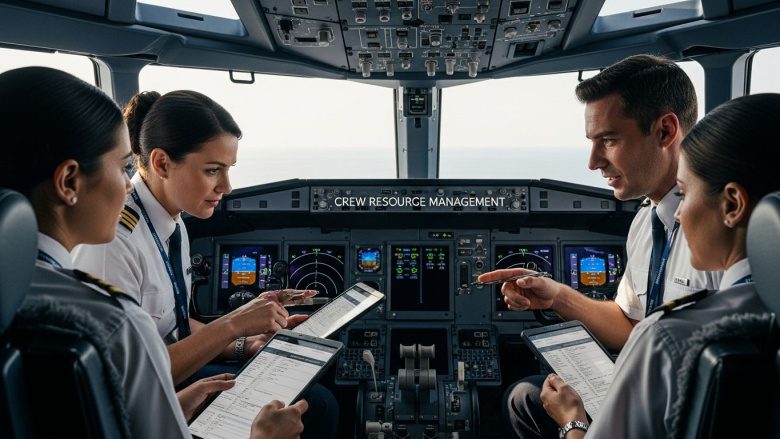Flight duty time limitations might sound like simple rules about work hours but their impact stretches well beyond a timetable. According to research, fatigue can impair a pilot’s judgment as much as alcohol does. Most would assume that technology handles the hardest parts of flying these days. Surprising then that the biggest factor in aviation safety is still how rested and alert your pilot actually is.
Table of Contents
- What Are Flight Duty Time Limitations?
- Why Flight Duty Time Limitations Matter In Aviation
- How Flight Duty Time Limitations Protect Pilots And Passengers
- Key Concepts Behind Flight Duty Time Regulations
- Real-World Applications Of Flight Duty Time Limitations
Quick Summary
| Takeaway | Explanation |
|---|---|
| Flight duty time regulations prevent crew fatigue | These regulations ensure pilots and cabin crew receive proper rest to maintain high performance and safety during flights. |
| Max duty hours are scientifically determined | FTL limits are based on human factors, considering elements like circadian rhythms, to mitigate fatigue effects. |
| Fatigue can severely impair performance | Studies show that fatigue negatively affects cognitive functions, reaction times, and decision-making abilities, comparable to alcohol. |
| Effective scheduling is essential for compliance | Airlines must create precise crew schedules while adhering to FTL, ensuring operational efficiency and safety standards. |
| Technology enhances fatigue management | Modern systems provide real-time tracking and analytics on crew fatigue, enabling proactive management of performance risks. |
What Are Flight Duty Time Limitations?
Flight Duty Time Limitations (FTL) represent a critical regulatory framework designed to ensure the safety and well-being of flight crew members by managing their work hours and preventing fatigue-related risks in aviation operations. EASA has established comprehensive guidelines that define precise parameters for how long pilots and cabin crew can work, fly, and rest.
Understanding the Core Purpose
At its fundamental level, flight duty time limitations are about preventing exhaustion and maintaining optimal human performance in high-stakes environments. Pilots and cabin crew operate in demanding conditions where split-second decisions can impact hundreds of lives. Fatigue can significantly impair cognitive functions, reaction times, and decision-making capabilities, making FTL regulations absolutely essential for aviation safety.
Key objectives of flight duty time limitations include:
- Preventing crew fatigue through structured work and rest periods
- Establishing maximum allowable flight and duty hours
- Ensuring adequate recovery time between duty cycles
- Maintaining consistent performance standards across commercial aviation
Regulatory Mechanisms and Implementation
The regulatory approach to flight duty time limitations involves complex calculations that consider multiple variables. These include:
- Time of day when duty begins
- Number of flight segments
- Length of individual flight times
- Accumulated duty hours within specific time frames
- Mandatory minimum rest periods
Under EASA regulations, these limitations are not arbitrary but scientifically designed. They account for circadian rhythms, potential sleep disruptions, and the physiological demands placed on flight crew during extended periods of high-concentration work.
Professional aviation organisations recognize that human performance is not constant. A pilot working late at night or completing multiple consecutive flight segments will experience different cognitive challenges compared to one starting a morning shift. FTL regulations dynamically adjust maximum duty times based on these nuanced human factors, providing a robust safety mechanism that protects both crew members and passengers.
Why Flight Duty Time Limitations Matter in Aviation
In the high-stakes world of aviation, flight duty time limitations represent a critical safeguard against one of the most insidious threats to flight safety: human fatigue. These regulations are not merely bureaucratic guidelines but carefully constructed protective measures designed to maintain the highest standards of operational performance and passenger security.
The Human Performance Equation
Pilots and crew members operate in an environment that demands extraordinary levels of concentration, precision, and rapid decision-making. Extended work hours, irregular sleep patterns, and complex flight schedules can dramatically reduce cognitive function and situational awareness. Research from the International Civil Aviation Organization demonstrates that fatigue can impair judgment comparably to alcohol consumption, creating potential risks that are unacceptable in aviation.
Key risk factors associated with crew fatigue include:
![]()
- Reduced reaction times
- Decreased problem-solving capabilities
- Impaired communication skills
- Diminished situational awareness
- Higher probability of human error
Economic and Safety Implications
Flight duty time limitations are not just about individual crew member wellness but have broader implications for aviation safety and operational efficiency. Insurance studies and accident investigations consistently reveal that fatigue-related errors contribute significantly to aviation incidents. By implementing structured work-rest cycles, airlines can proactively mitigate potential risks and maintain a consistently high safety standard.
Moreover, these regulations help aviation professionals manage their energy and maintain peak performance. For pilots seeking comprehensive strategies to manage professional stress, our guide on stress reduction techniques offers additional insights into maintaining optimal mental and physical readiness.
Ultimately, flight duty time limitations represent a sophisticated approach to human factors management. They recognize that pilots are not machines but human beings whose performance varies with physiological and psychological conditions. By creating structured guidelines that respect human limitations, these regulations ensure that every flight operates with the highest possible margin of safety.
How Flight Duty Time Limitations Protect Pilots and Passengers
The intricate system of flight duty time limitations serves as a comprehensive protective mechanism that simultaneously safeguards the well-being of flight crew and ensures passenger safety through meticulously designed regulatory frameworks. These limitations represent a sophisticated approach to managing human performance in high-stress aviation environments.
Physiological Protection Mechanisms
Research from the International Civil Aviation Organization highlights that human beings experience predictable performance degradation during extended work periods. Flight duty time limitations counteract these natural physiological constraints by establishing scientifically calculated rest and work intervals. This approach prevents cognitive fatigue, maintaining pilots’ critical decision-making capabilities during complex flight operations.
Key physiological protection strategies include:
The table below organises the physiological protection mechanisms against fatigue, as discussed in the section, to clarify their focus and preventive benefits for flight crew.
| Protection Mechanism | Focus | Fatigue-Related Benefit |
|---|---|---|
| Mandating minimum consecutive rest hours | Recovery between duty cycles | Prevents chronic fatigue accumulation |
| Restricting maximum continuous work hours | Limiting duration of unbroken work periods | Reduces risk of acute fatigue |
| Accounting for circadian rhythm disruptions | Addressing shift timings and sleep cycles | Minimises impact of late shifts and jet lag |
| Implementing recovery periods after night shifts | Scheduling rest after overnight duty | Ensures reset of normal sleep patterns |
| Monitoring cumulative fatigue across segments | Tracking total fatigue load over time | Alerts to gradual performance degradation |
- Mandating minimum consecutive rest hours between duty cycles
- Restricting maximum continuous work hours
- Accounting for circadian rhythm disruptions
- Implementing recovery periods after night shifts
- Monitoring cumulative fatigue across multiple flight segments
Passenger Safety Through Crew Performance Management
Beyond individual crew protection, flight duty time limitations directly translate into enhanced passenger safety. When pilots and cabin crew operate within carefully structured work parameters, the probability of human error dramatically decreases. Airlines implementing rigorous FTL protocols demonstrate significantly lower incident rates compared to those with less structured approaches.
Moreover, for aviation professionals seeking comprehensive strategies to maintain peak performance, our guide on stress reduction techniques provides additional insights into managing professional challenges.
Unique to these regulations is their dynamic nature. Modern flight duty time limitations do not apply uniform restrictions but adapt to complex variables such as flight duration, time of day, number of flight segments, and individual crew member characteristics. This adaptive approach ensures that safety protocols remain responsive to the nuanced demands of contemporary aviation operations, creating a robust defense mechanism that protects both human resources and passenger lives.
Key Concepts Behind Flight Duty Time Regulations
Flight duty time regulations represent a sophisticated scientific approach to managing human performance in aviation, blending physiological research, operational complexity, and safety engineering. These intricate guidelines are not arbitrary restrictions but carefully constructed frameworks designed to optimize crew performance and passenger safety.
Scientific Foundations of Fatigue Management
Research from the International Civil Aviation Organization reveals that human cognitive performance follows predictable patterns of degradation during extended work periods. Flight duty time regulations are fundamentally built upon understanding these physiological limitations, accounting for factors such as circadian rhythms, sleep cycles, and mental alertness.
Fundamental scientific principles underlying these regulations include:
- Recognition of individual variability in fatigue resistance
- Understanding neurological impact of sleep deprivation
- Accounting for cumulative and acute fatigue effects
- Acknowledging psychological stress factors in aviation environments
- Integrating empirical data from human performance studies
Operational Complexity and Adaptive Frameworks
Modern flight duty time regulations go beyond simple hour restrictions. They create dynamic, adaptable systems that respond to complex operational variables. For professionals seeking deeper insights into managing workplace challenges, our guide on crew resource management provides comprehensive strategies for maintaining peak performance.
These regulations consider multiple interconnected factors such as flight duration, time of day, number of flight segments, and individual crew member characteristics. By creating flexible yet stringent guidelines, aviation authorities ensure that safety protocols remain responsive to the nuanced demands of contemporary flight operations. The ultimate goal is not just compliance, but creating a proactive approach to managing human performance risks in high-stakes aviation environments.
This table summarises key scientific principles and operational complexities underpinning flight duty time regulations, clarifying how regulations blend physiological and practical factors to optimise safety.
| Regulatory Foundation | Description |
|---|---|
| Individual variability in fatigue | Recognition that each crew member tolerates fatigue differently |
| Neurological impact of sleep deprivation | Understanding of how lack of sleep impairs cognitive function |
| Cumulative and acute fatigue effects | Consideration of both short-term and long-term tiredness |
| Psychological stress factors | Acknowledgement of stressors unique to aviation roles |
| Dynamic adaptation to operation | Regulations adjust based on time of day, flight length, crew profile |
| Flexible yet stringent guidelines | Balancing operational needs with strict safety limitations |
Real-World Applications of Flight Duty Time Limitations
Flight duty time limitations transition from theoretical frameworks to critical operational strategies that airlines and aviation organisations implement daily. These regulations are not passive guidelines but active, dynamic mechanisms that directly influence flight scheduling, crew management, and overall safety protocols.
Scheduling and Operational Planning
Research from the International Civil Aviation Organization demonstrates that effective implementation of flight duty time limitations requires sophisticated planning and continuous monitoring. Airlines must develop complex scheduling algorithms that simultaneously respect regulatory requirements and operational efficiency.
Key practical implementation strategies include:
- Creating precise crew rotation schedules
- Developing automated tracking systems for duty hours
- Implementing real-time fatigue risk management protocols
- Establishing flexible backup crew arrangements
- Conducting regular performance and compliance audits
Technology and Monitoring Systems
Modern aviation leverages advanced technological solutions to ensure compliance with flight duty time regulations. Digital platforms now enable real-time tracking of crew fatigue levels, providing unprecedented insights into human performance management. For aviation professionals seeking to enhance their understanding of collaborative workplace strategies, our guide on effective online collaboration offers comprehensive insights.
These technological systems go beyond simple hour tracking. They integrate complex algorithms that assess individual crew member performance, account for circadian rhythm disruptions, and provide predictive analytics about potential fatigue risks. By transforming regulatory compliance from a administrative task into a dynamic, data-driven process, aviation organisations can proactively manage safety risks and optimize crew performance.

Turn Flight Duty Limitations Knowledge into Your Aviation Advantage
Grappling with the complexities of flight duty time limitations can feel overwhelming, especially when human performance and regulatory compliance are at the heart of every safe journey. Whether you are navigating EASA rules or aiming to master fatigue risk management, building solid theoretical foundations is vital for lasting career success. The article has shown how critical understanding FTL is—not only for managing your own wellbeing but for securing passenger safety and maintaining operational excellence.

Are you ready to transform these insights into professional growth? Join VictorOne.eu for fully online, EASA-approved courses designed for aspiring and advancing pilots. Deepen your comprehension of FTL concepts and gain access to expert guidance, flexible study tools, and interactive question banks—all tailored to help you excel in pilot licensing. Explore our aviation theory education resources now and step confidently into the cockpit. Take charge of your future today by visiting our main site, where safety and expertise meet opportunity.
Frequently Asked Questions
What are Flight Duty Time Limitations?
Flight Duty Time Limitations (FTL) are regulations that govern the maximum hours that pilots and cabin crew can work, fly, and rest to prevent fatigue and ensure safety in aviation operations.
Why are Flight Duty Time Limitations important for aviation safety?
FTL are crucial as they help prevent crew fatigue, which can impair cognitive functions, reaction times, and decision-making abilities, thus ensuring a higher standard of safety for both crew and passengers.
How do Flight Duty Time Limitations impact crew performance?
FTL significantly improve crew performance by mandating sufficient rest periods and limiting work hours, which helps maintain cognitive function, situational awareness, and reduces the likelihood of human error during flights.
What factors do Flight Duty Time Limitations consider?
FTL regulations take into account various factors including the time of day when duty begins, the number of flight segments, individual flight times, accumulated duty hours, and mandatory rest periods to effectively manage crew fatigue.


